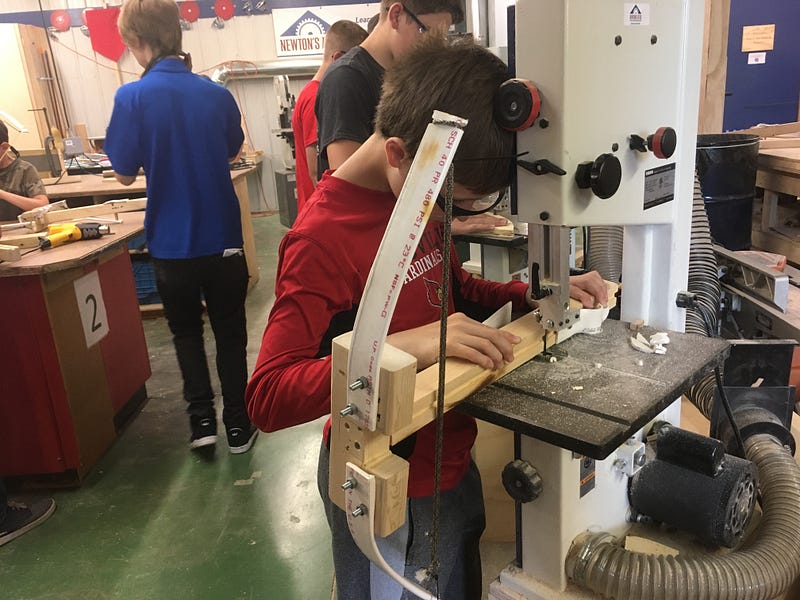
“One of my first memories of my mother was her snorting pills off of a coffee table when I was just about coffee table high.”
When Lindsey was five, her mother, who had a stable job at the time, spiraled into drug addiction. That was after she lost her husband, her father, and her mother in a six-month period. At fifteen, after years of abuse at the hands of her mother’s boyfriend, she was kicked out of her house. Lindsey, now twenty-two years old, was left couch-surfing and on the streets from the ages of fifteen to eighteen.
In high school in Perry County, she was a great student with excellent grades and a member of the Drama and Art clubs after school. However, school attendance was an issue for her throughout her teens because she didn’t have a place to shower or sleep, nor did she have the transportation to get to and from school. “It was a really awkward situation to where my friends and teachers were very aware of my situation but kind of nothing was done about it,” Lindsey says. “My principal looked me dead in the eyes and told me that me being homeless was not her fault and not an excuse for me not to come to school, and… that was kind of hard to go through.” Generally, her teachers were affluent members of the community, which Lindsey says caused them to deny her homelessness. “If I was a teacher, I wouldn’t want to go home knowing that one of my kids was sleeping outside, or not having something to eat that night, or not having a way to get clean for school, or not having a way to get to school.”
“If I was a teacher, I wouldn’t want to go home knowing that one of my kids was sleeping outside, or not having something to eat that night, or not having a way to get clean for school, or not having a way to get to school.”
When she turned eighteen at the beginning of her senior year, it took three months for her to get the housing assistance she hadn’t had access to as a minor. The strain of homelessness, which only exacerbated pre-existing physical and mental health struggles, proved too much for Lindsey to bear. In the last month of her senior year, Lindsey attempted suicide and was hospitalized for a week. After she got out, she was told by her school that she had been redistricted and wasn’t able to be a student there anymore. The principal at Hazard High School, the school she was redistricted for, was compassionate, but said he couldn’t allow her to transfer “to just walk for graduation.” Despite the many barriers, she obtained her GED that summer. However, because of her unstable housing situation, she was unable to attend college.
Lindsey believes that her homelessness was partially caused by the social workers that visited her house and their willful ignorance of her situation. Perry County is an extremely tight-knit community, where everybody knows everybody, and the social workers are no exception. Social workers came to her house where “nothing was in the fridge, people were purchasing drugs from my mother, and paraphernalia was everywhere.” The social workers knew her mom and viewed her as a respected member of the community, so they unfortunately turned a blind eye. Lindsey believes that if her situation had been handled properly, she would have been placed into foster care by Child Protective Services (CPS), but she says choosing between homelessness and being taken away from her family, something that many of her Appalachian peers have faced, would have been difficult.

Lindsey’s homelessness, though tragic, is not unique. Child homelessness runs deep in rural Kentucky communities and is far more than just a surface-level issue. In the 2016–17 school year, 28,650 students were reported as homeless across Kentucky by the Kentucky Department of Education.
One possible improvement brought up in our interview with Lindsey would be for CPS to bring in social workers who don’t know everybody in the community. However, Lindsey believes that they would be viewed as “Northerners stealing Perry County jobs” and would be met with backlash from the community. She also feels that her experience was more of a special case, but that the social worker system as a whole is much more effective. Ultimately, the best solutions may come from people like Lindsey, who understand the problem of homelessness in a way that outsiders can not.
Ultimately, the best solutions may come from people like Lindsey, who understand the problem of homelessness in a way that outsiders can not.
In Lindsey’s view, simply acknowledging the issue is key. She thinks that true solutions would include “making programs accessible for minors facing housing instability. Families actually reaching out for help when needed instead of being fearful that their children will be taken away. Adults taking kids more seriously whenever they hear them talking about problems at home. Schools addressing problems when they’re seen instead of ignoring the child that comes in visibly dirty and malnourished every day.”
Lindsey is now working to help other homeless teenagers. She spent the summer working with Appalshop, making documentaries on homelessness and access to healthcare for women and the LGBTQ+ community in Appalachia. This past August, she started working with the Youth Homelessness Prevention Board, which distributed surveys to high school students in counties where homelessness is rampant. Lindsey hopes that through these efforts, she will be able to make a difference for other homeless teens.

Benjamin Shapere is a sophomore at Bryan Station High School.

The interview cited in this piece was conducted by Ben Shapere and Sadie Bograd. Many thanks to Lindsey for sharing her story with honesty and strength.











